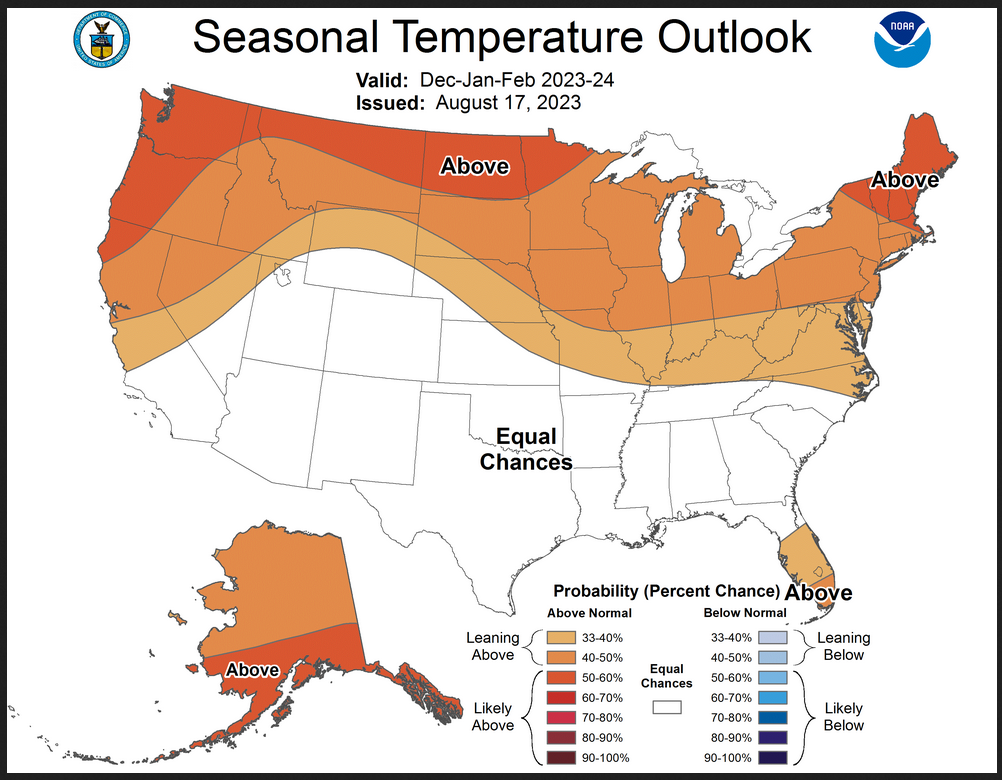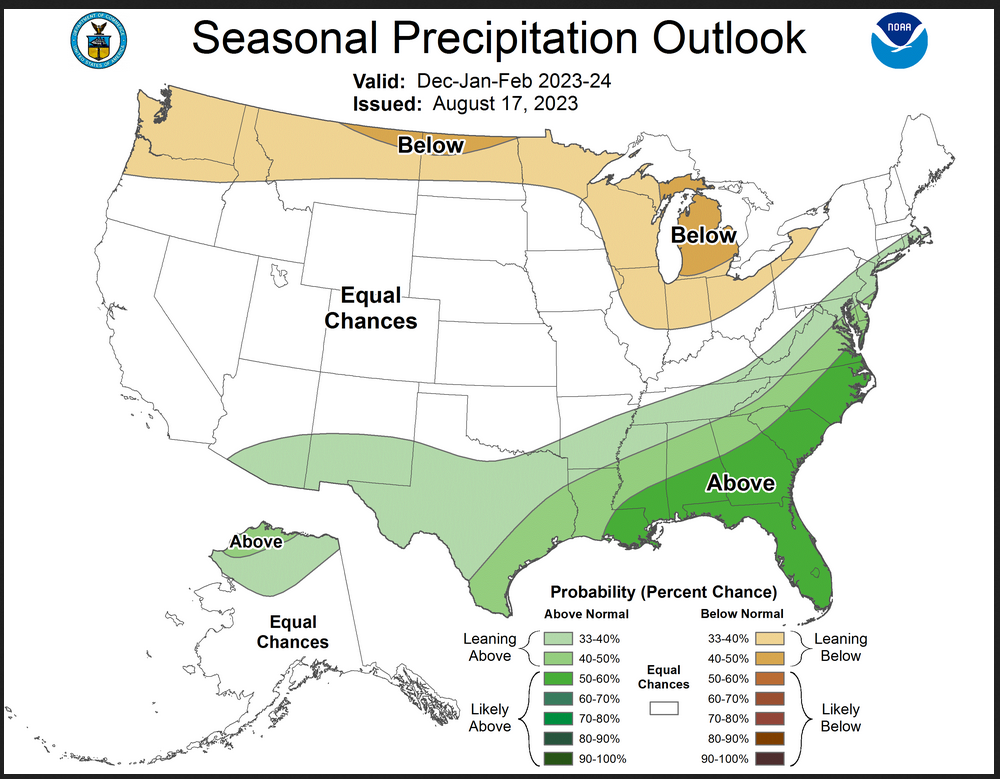Our Report on the JAMSTEC Three-Season Weather Forecast – August 26, 2023

The Japan Agency for Marine-Earth Science and Technology, or JAMSTEC, is a Japanese national research institute for marine-earth science and technology
From the JAMSTEC Discussion:
As predicted, the recent observation confirms the development of the El Niño. The SINTEX-F ensemble mean predicts that the El Niño will reach its peak in the boreal autumn and persist at least until the next boreal spring. However, there is a large uncertainty in the predicted amplitude.
Although it is a World forecast, it includes a forecast for North America since North America is part of the World.
First, we take a look at the forecasted sea surface temperature anomalies (SSTA). JAMSTEC starts by forecasting the SSTA and Nino 3.4 Index on the first day of the month and from there it usually takes their models about two weeks to produce their seasonal forecast. I received it from JAMSTEC on August 22, 2023 which was later than usual. That is important because the model runs are based on conditions as of August 1.
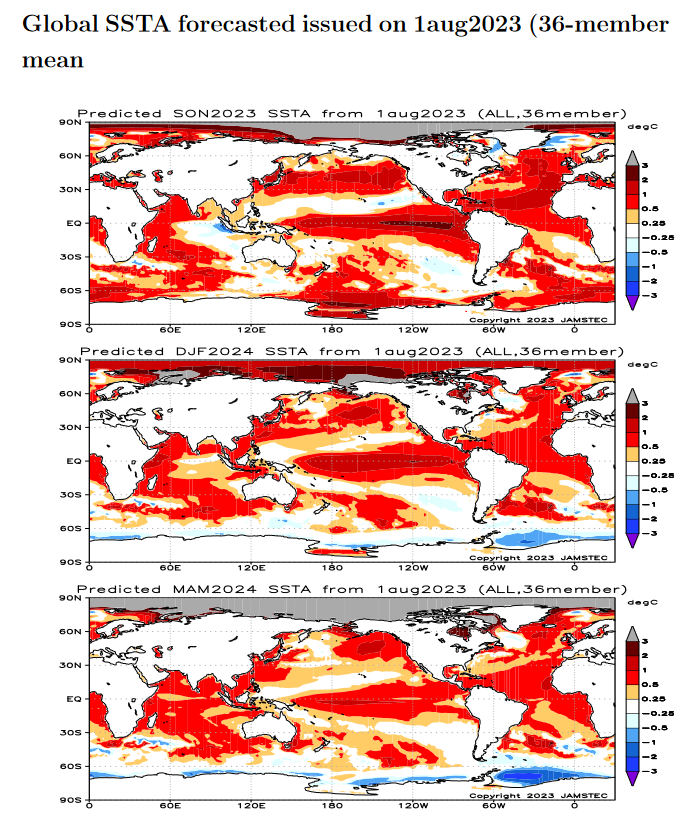
| This shows their forecast of sea surface temperature anomalies at three points in time. Red is warm and is associated with El Nino. You can see the El Nino tongue of warm water extending from Peru to the west in all three time periods. It seems to be stronger in the 1st and 2nd time periods. The warmest water shifts west in the third period exhibiting Modoki characteristics. The JAMSTEC images seem more normal than the NOAA images. The full set of NOAA SSTA images can be found HERE.
Both NOAA and JAMSTEC are showing very warm oceans. I have written about that before. It raises questions about the reliability of our current approach to thinking about the ENSO Cycle. This is covered in another article that can be accessed HERE. JAMSTEC uses the same definition of Normal (climatology as NOAA). They do a better job at characterizing La Ninas and El Ninos than NOAA. JAMSTEC provides me with a lot of other information that I do not include in my articles to keep them to a manageable size for readers. |
Then we look at three forecasts. JAMSTEC tries to work with meteorological seasons and this month it lines up perfectly and we have three full-season forecasts.
Now we look at the three seasonal forecasts.
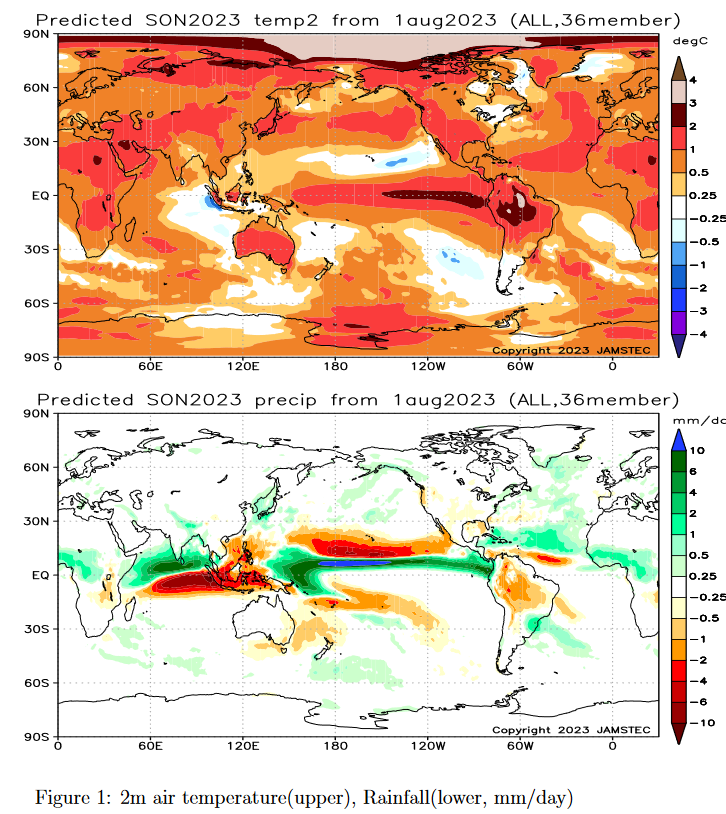
| The above covers September/October/November (SON 2023) also known as meteorological Autumn.
Here is the interpretation from the JAMSTEC Discussion shown in the body of the article: “The SINTEX-F predicts that most parts of the globe will experience a hotter-than-normal condition in the boreal autumn (austral spring). The Arctic region will experience extremely hotter-than-normal conditions. ” “As regards the rainfall in the boreal autumn (austral spring), a drier-than-normal condition is predicted for some parts of the U.S.A., Hawaii, the northern part of the South American continent, eastern Australia, Uganda, Tanzania, Indonesia, some parts of Indochina, and the Philippines. In contrast, southern Alaska, the Caribbean, La Plata, some parts of India, Sri Lanka, Nepal, Bhutan, central and western Africa, the Horn of Africa, and some parts of East Asia will experience a wetter-than-normal condition. In particular, we notice that Indonesia and eastern Australia may experience extremely drier than normal conditions, owing to a combination of the positive Indian Ocean Dipole and the El Niño. ” “The model predicts that most of Japan will be warmer than normal in the autumn. The model also predicts that western Japan will be wetter than normal in the autumn.” |
| The above covers December/January/February (DJF 2023-2024) which is meteorological Winter.
Here is the interpretation from the JAMSTEC Discussion shown below: “The model also predicts a similar condition (to autumn) in the boreal winter (austral summer). “In the boreal winter (austral summer), a drier-than-normal condition is predicted for the western coastal areas of Canada and the northern U.S.A., Hawaii, Brazil, some parts of the South American continent, northern Australia, the Philippines, and southern Africa. In contrast, Alaska, some parts of the U.S.A., some parts of La Plata, central and eastern Africa, Madagascar, some parts of Central and East Asia, and some parts of Indonesia will experience a wetter-than-normal condition.” “The model predicts that most of Japan will be warmer than normal in the winter. The model also predicts that western Japan will be wetter than normal in the winter.” |
| And above, March/April/May (MAM) 2024 is meteorological Spring. JAMSTEC does not provide its interpretation of its third season but one can observe it on the maps. |
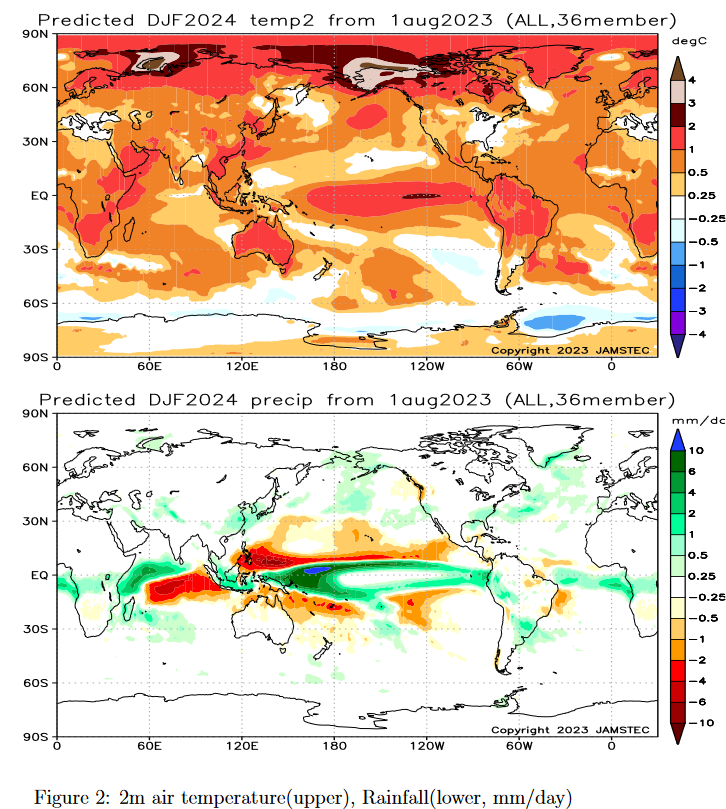
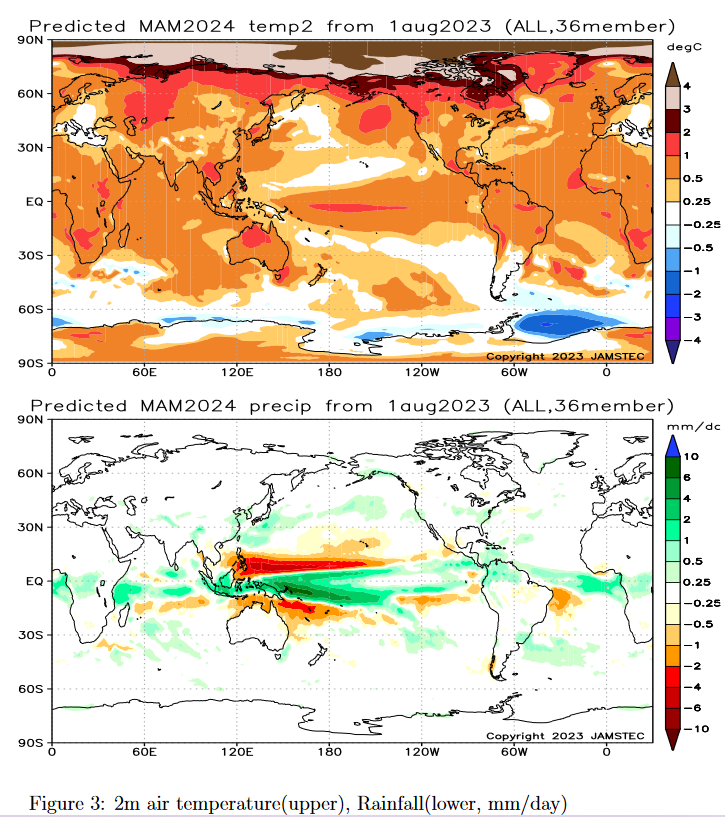


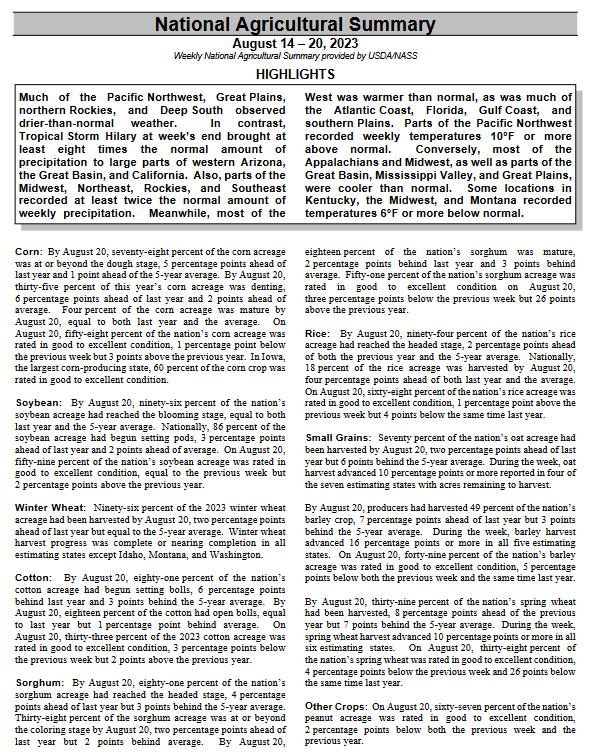
![[Image of WPC Flash Flooding/Excessive Rainfall Outlook]](https://www.nhc.noaa.gov/storm_graphics/EP09/refresh/EP0923WPCERO+gif/085022WPCERO_sm.gif)
